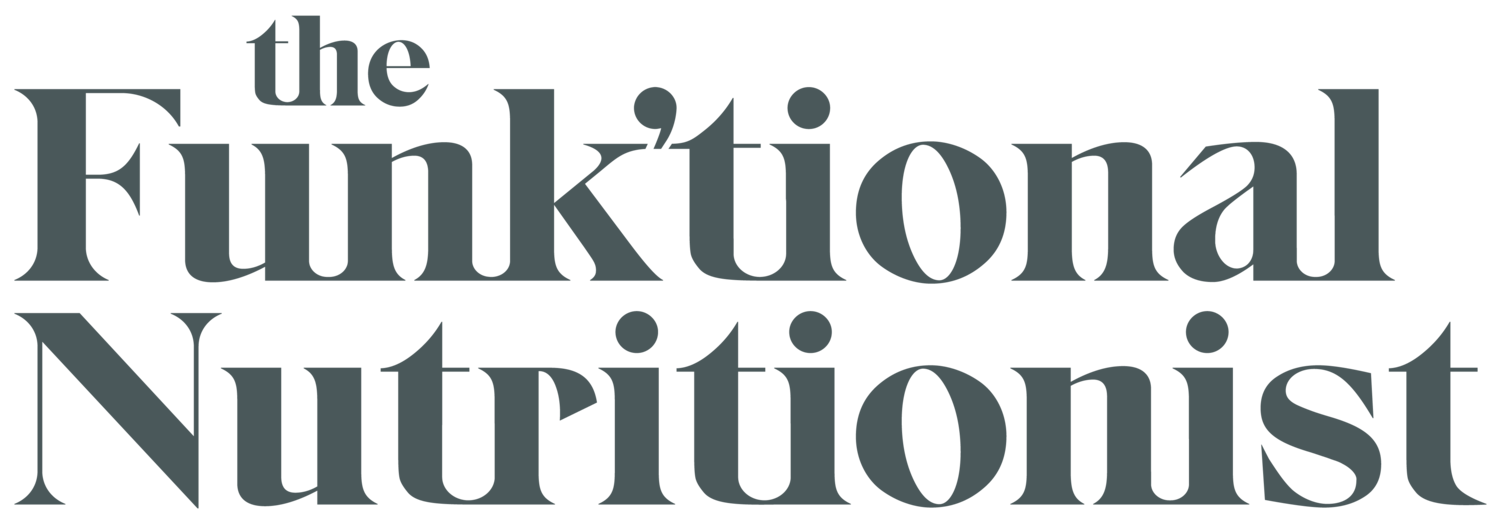5 Free & Easy Things to Reduce Toxic Load
We have, on average, 700 synthetic chemicals in our bodies.
We are constantly exposed to many environmental pollutants, drugs and dietary components. The majority of these chemicals have not been tested for safety in human health. As Kelly Brogran, MD points out, we have an “innocent until proven guilty” approach when it comes to chemicals in pharmaceuticals, food, personal care products, cookware, and other everyday items. Unfortunately, we are starting to understand that not only do these toxicants impact us negatively, but combinations of these toxicants can exacerbate their harmful effects, something referred to as the “cocktail effect.”
Body burden refers to the levels of toxicants in humans (blood, urine, umbilical cord blood, breast milk). Ours is high.
I know this can feel overwhelming and stressful, so today I’m sharing 5 simple things you can do to reduce your body burden and toxic load. And they won’t cost you a dime!
Skip the Lid
Plastic coffee lids are one of the worst offenders for BPA exposure. When you sip hot liquid from a plastic container, the steam essentially pollutes the entire beverage with Bisphenol A (BPA)—a toxin that is linked to cancer, infertility, autoimmune disease, brain disorders, ADHD, developmental risks and diabetes. If you're not bringing your own plastic-free reusable coffee cup, just SKIP THE LIDS. Environmental issues aside, this small act can be hugely beneficial for your own personal health.
It’s also extremely important to stop drinking out of plastic water bottles. Reuse glass food jars and you'll save money as well as reduce your body burden. Even if a plastic is labeled BPA-free there is no guarantee that it is toxicant-free. BPA is just ONE identified harmful component of plastic.
Just say NO to all plastic—this includes sippy cups, reusable plastic containers and your beloved plastic protein power shaker bottles!
Decline Receipts
I always politely ask the cashier to toss the receipt for me. Cashier receipts contain BPA and BPS, which are equally toxic in high amounts.
It has been shown that holding thermal receipt paper results in BPA in our blood and urine. This is especially true after using hand sanitizer. So while we’re on the subject…
Never Use Hand Sanitizer
They contain chemicals that enhance the penetration of substances through the skin. In other words, your skin becomes even more permeable to toxins (like BPA).
Not only that, but hand sanitizers can kill off beneficial bacteria on our skin, which is a major line of defense against pathogens. Use soap and water instead.
Toss the Tampons
Feminine care/hygiene industry is shameful at best.
Products are marketed to invoke shame in women (you won’t be fresh, confident or sexy without these!), and many include harmful chemicals that will be placed on a very absorbent part of your body. Tampons and pads contain dioxins, furans, pesticide residues, and unknown fragrance chemicals. The risks? Cancer, reproductive harm, hormone disruption, and allergic rash.
Purchase organic tampons and pads instead (I typically use applicator-free because #lesswaste, but you do you, boo boo). Be sure to apply this information to your teenagers, as well! A Diva Cup is another safer option.
Stop using all wipes, washes, douches, deodorants, sprays, etc. Save your money and protect your health by using unscented soap and water instead.
Ditch the Perfume
Yep, stop using all perfume.
This won’t cost you anything, but will help to protect your health—and those around you.
Perfume is being called the new “second smoke,” because when you wear it, others can breathe it in. Why is this a problem?
The word “fragrance” is legally considered a trade secret, so companies do not need to disclose what chemicals make up the scent. Almost 3000 chemical ingredients can go unreported because of this loophole. These hidden ingredients may trigger dermatitis, respiratory distress, and hormone disruption. Your best bet is to ditch all synthetic fragrance.
Other things that include fragrance that you might not be aware of: lotions, shampoo, conditioner, deodorant, hand soap, dish soap, laundry detergent, dryer sheets, candles, plug-ins, cleaning and disinfectant sprays.
Before sure to choose a brand who only uses essential oils for scents and keeps and tests for ingredient safety.
What else can you do?
If you found this information helpful, please share! The average consumer is unaware of most of this information. These are such simple things that we all can do each day that will collectively reduce our toxic exposure and body burden. And they don't cost one red cent!
You can also learn how to minimize food sources of harmful chemicals in by participating in my online nutrition programs.
Wanna know what prompted this blog post? Keep reading...
This photo. This photo from a recent Beautycounter event stopped me in my tracks.
The man on the right is Xavier Ormancey, Head of Product Development at Beautycounter.
The (thin) folder on his lap is what it takes for a personal care product to receive FDA approval.
The insanely huge binder in his hands is what Beautycounter requires for just ONE product to receive our personal stamp of approval before it hits the market. This binder is for just ONE product.
Guys, our personal care products contain toxicants, carcinogens and hormone disruptors. This isn't a scare tactic; these are just facts. The FDA does little to protect us. The responsibility falls on companies to make the right choices and consumers to do their research. Unfortunately, 80% of women have no idea about any of this.
"Rigorous screening" aren't just buzzwords for a Beautycounter marketing pitch. Consumer health is something we take seriously.
NO ONE else in the beauty industry is doing this.
The right thing isn't always the easy thing. (Hello, I go up against the food and diet industry everyday. It's exhausting - for both myself AND my therapist). But companies like Beautycounter do it anyway.
We aren't waiting for change. We're making it.







